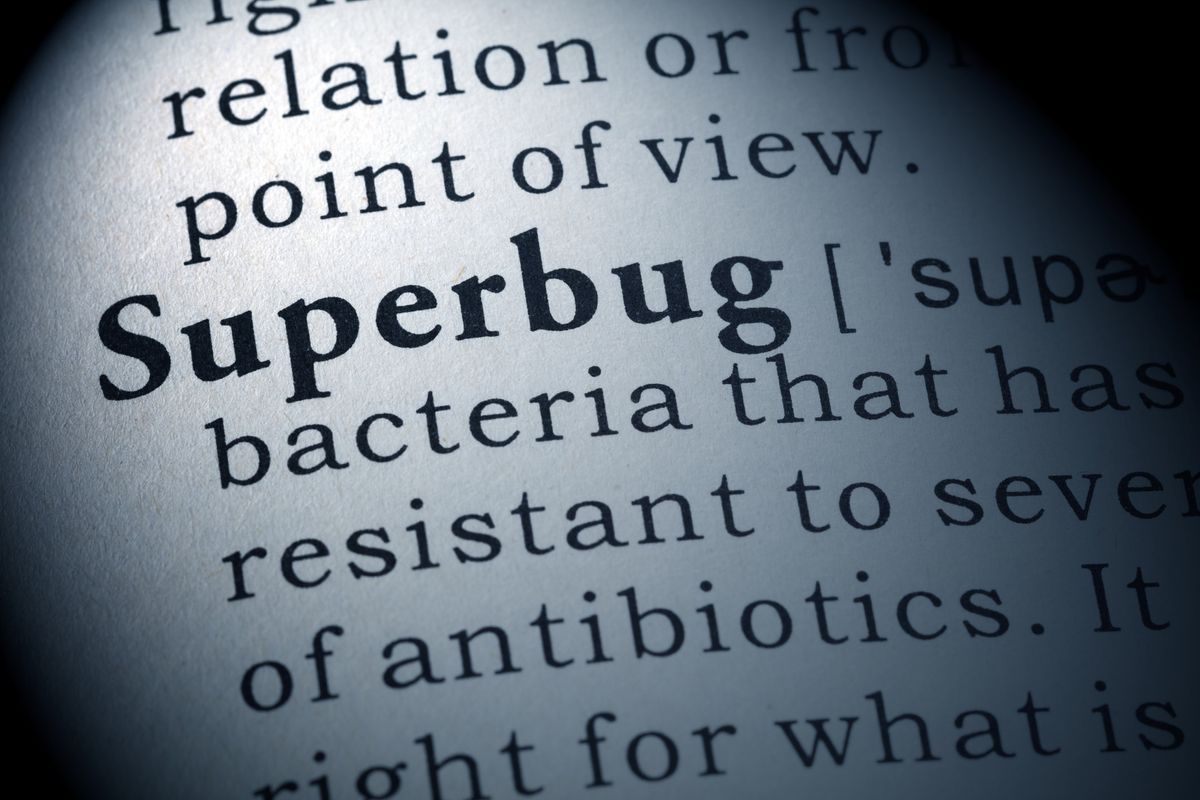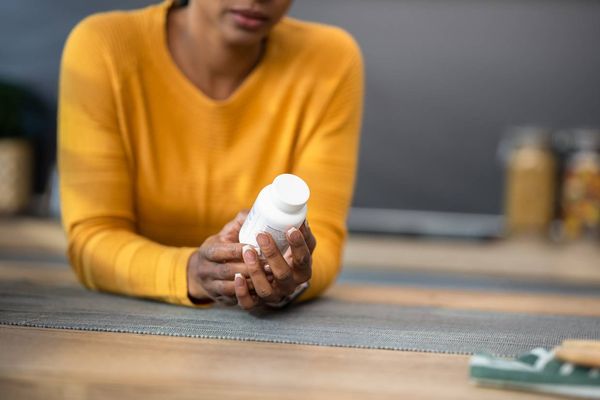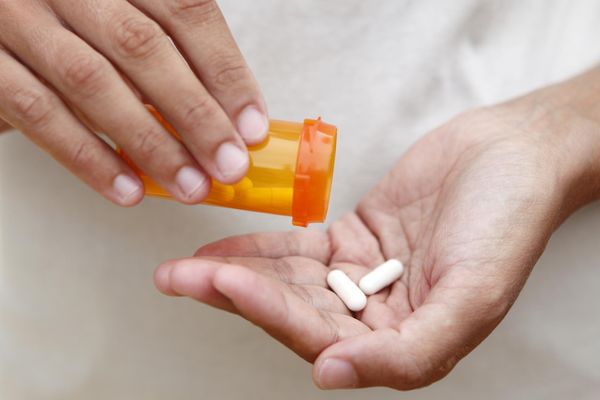Getting a simple infection is no big deal. You just go to the doctor and get a prescription for an antibiotic. For the most part, this is a good thing. After all, people don't die from a simple cut like they used to. But the ease of getting antibiotics also has a downside. Their overuse or misuse can lead to antimicrobial resistance (AMR), and this has negative health consequences on a global scale.
In fact, the World Health Organization (WHO) has declared AMR to be one of the top 10 global public health threats facing humanity.
What is antimicrobial resistance?
" Antimicrobial resistance is the ability of bacteria, viruses, fungi and parasites to change over time and no longer respond to medicines, making infections harder to treat and, in many cases, untreatable," explained Dr. Debra Goff, PharmD, an infectious disease specialist and one of 25 global experts appointed to the WHO's Antimicrobial Stewardship Program.
The formation of these resistant microbes, also known as superbugs, occurs naturally over time, but can also be caused by other conditions such as antibiotic overuse, poor sanitation and hygiene, and poor infection and disease prevention. Antimicrobial-resistant organisms can be found in water, soil, air, people, animals, food and plants — and can be spread between people and animals as well as person to person.
We have a variety of antimicrobial drugs in our arsenal including antibiotics, antivirals, antifungals and antiparasitic medications, but antibiotic resistance is one of the most common forms of (AMR) that exists. The CDC estimates that 2.8 million Americans get infections from antibiotic-resistant bacteria each year.
"Microbes are constantly changing, and they get new genetic information, and this information is passed to other germs that have never even come into contact with the antibiotic, and they also develop resistance," explained Dr. Jose Mateo-Contreras, a pediatric infectious disease specialist at KIDZ Medical Services in Florida.
AMR has also occurred because the development of new treatments has not matched the rate of drug resistance.
"Bacteria share their resistance genes with one another, making it harder for us to develop new antimicrobials. Antimicrobial resistance is a global problem because we overused antimicrobials, while pharmaceutical companies stopped discovering new antimicrobials," Goff explained.
Why does it matter?
AMR is a big issue because an infection from a drug-resistant microbe may be untreatable and could lead to poor outcomes for patients.
"One of the superbugs, gonorrhea . . . is now resistant to multiple antibiotics, and if not treated it can lead to being sterile," Mateo-Contreras said.
Even worse, an infection from a drug-resistant microbe could result in death.
WHO reports that 700,000 people around the world die each year because of AMR, with 35,000 of those deaths occurring in the United States, according to the CDC.
Who is affected most by antimicrobial resistance?
No one has immunity against AMR, but certain populations of people and certain drugs are at higher risk for resistance.
"Any antibiotic that is constantly overprescribed and unnecessary is at risk for resistance," Goff said, adding, "The more you use an antibiotic, the less effective it becomes."
For example, erythromycin is a short-course antibiotic that's been widely used since the 1950s. It's prescribed to treat a number of infections caused by bacteria, including respiratory infections, pneumonia, ear infections, urinary tract infections and sexually transmitted diseases (STDs). Over the years, the bacteria group A Streptococcus has become resistant to the drug, making erythromycin useless against many of these infections.
According to Mateo-Contreras, individuals who are hospitalized or living in long-term care facilities such as nursing homes tend to use antibiotics more than other people, and have a higher risk of developing antibiotic resistance. He adds that individuals with chronic conditions that affect the immune system, such as cancer, have added vulnerability to resistance as well.
What is being done?
Antimicrobial resistance and the rise of superbugs is a global public health problem, and one that is being addressed both in the United States and globally.
"In the U.S., hospitals are required to have antimicrobial stewardship programs (ASP) led by infectious diseases pharmacists and physicians to oversee the use of antimicrobials within the hospital," Goff explained. She added that these programs are spreading to outpatient settings, such as clinics and nursing homes, where the bulk of antimicrobial prescribing occurs.
Other initiatives include the Antimicrobial Resistance Fighter Coalition, which works to engage stakeholders and spread awareness about antimicrobial resistance in over 45 countries. In 2018, the CDC launched The AMR Challenge, a year-long global effort aimed at tackling AMR.
What can individuals do?
Antibiotics are now so widely used that the CDC estimates 30% of antibiotic prescriptions are unnecessary. Patients and healthcare providers will need to work together to rectify this problem. Healthcare providers can help by being conservative when prescribing these types of medications, and individuals can play a role in fighting antimicrobial resistance by not demanding antibiotics from their doctor, Goff said.
When antibiotics are properly prescribed, the patient needs to follow the directions exactly and finish the prescription, as taking medicines for a shorter time can lead the remaining bacteria to duplicate and mutate into resistant forms.
People should also refrain from sharing antimicrobial medications, using expired or old medicines, and using the wrong kind of antimicrobial medicine. For example, people should not use an antibiotic to treat a viral infection.
In order to ensure good public health for all, healthcare providers and the community at large need to take steps to help avoid AMR. People can help reduce the creation of new AMR strains by following prescription instructions carefully. But, they can also help by becoming informed about the things that cause AMR and reducing their risk of infection in the first place by doing things like washing their hands regularly and practicing safe sex.
The less resistant we as a society are to taking these cautionary steps, the less resistant our microbes will be too.
CORRECTION: In an earlier version of this story, Dr. Mateo-Contreras said that gonorrhea is becoming resistant to multiple antibiotics. It is already resistant.
- Why Antimicrobial Resistance Is a Threat We Need to Take Seriously - HealthyWomen ›
- Antimicrobial Resistance: An Emerging Public Health Threat - HealthyWomen ›
- Fast Facts: What You Need to Know About Antimicrobial Resistance (AMR) - HealthyWomen ›
- Clinically Speaking: Important Questions to Ask About Antimicrobial Resistance - HealthyWomen ›
- How Healthcare Providers and Patients Can Limit the Spread of Antimicrobial Resistance - HealthyWomen ›
- How Superbugs Put Cancer Patients at Risk - HealthyWomen ›
- Sexually Transmitted Infections (STIs) and Drug Resistance - HealthyWomen ›
- Sexually Transmitted Infections (STIs) and Antimicrobial Resistance - HealthyWomen ›
- How Antimicrobial Resistance (AMR) Complicates Other Health Conditions - HealthyWomen ›
- How Antimicrobial Resistance (AMR) Complicates Other Health Conditions - HealthyWomen ›
- Q&A: How Fighting Superbugs Could Help Prevent the Next Pandemic - HealthyWomen ›
- Q&A: How Fighting Superbugs Could Help Prevent the Next Pandemic - HealthyWomen ›







